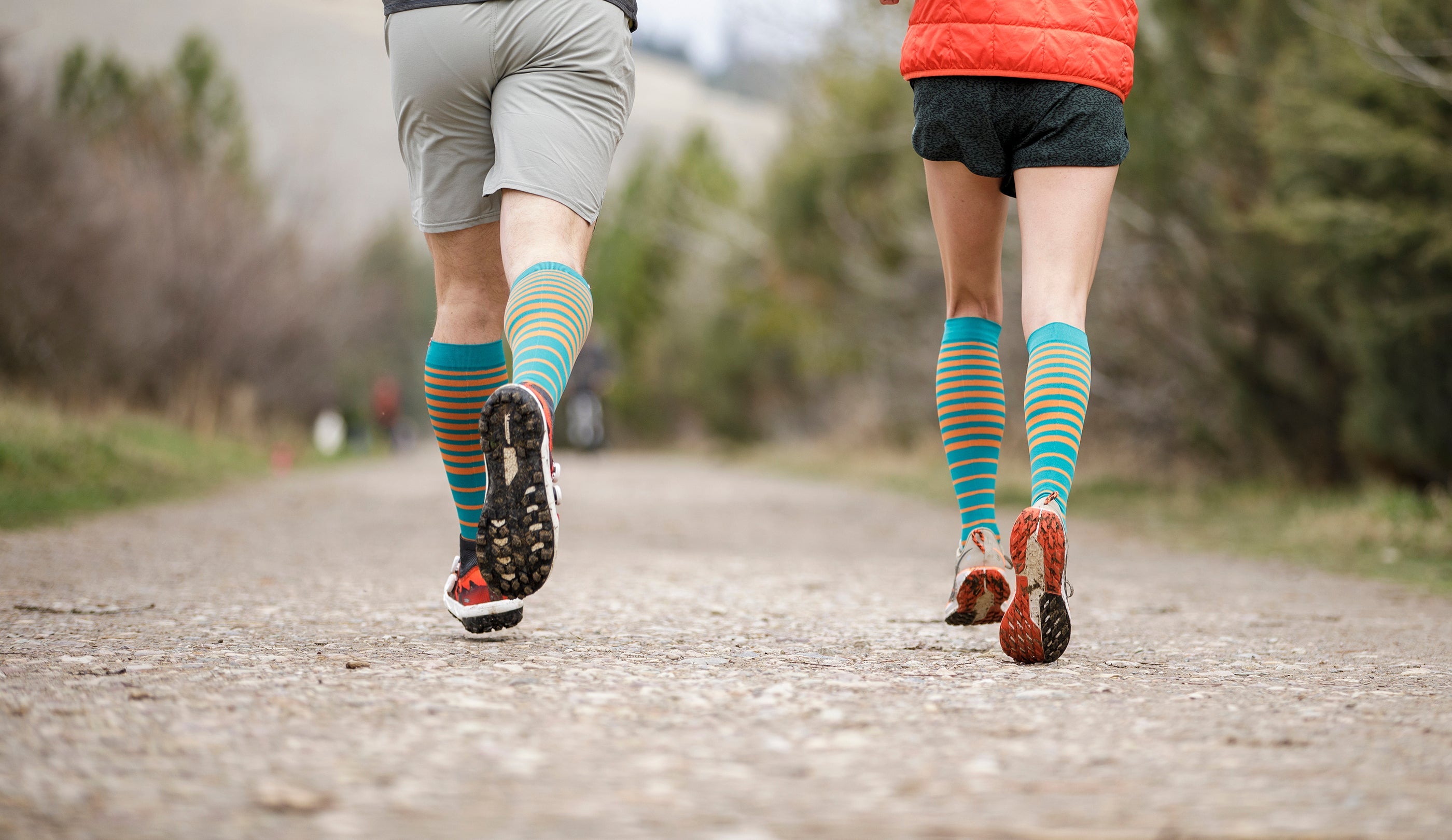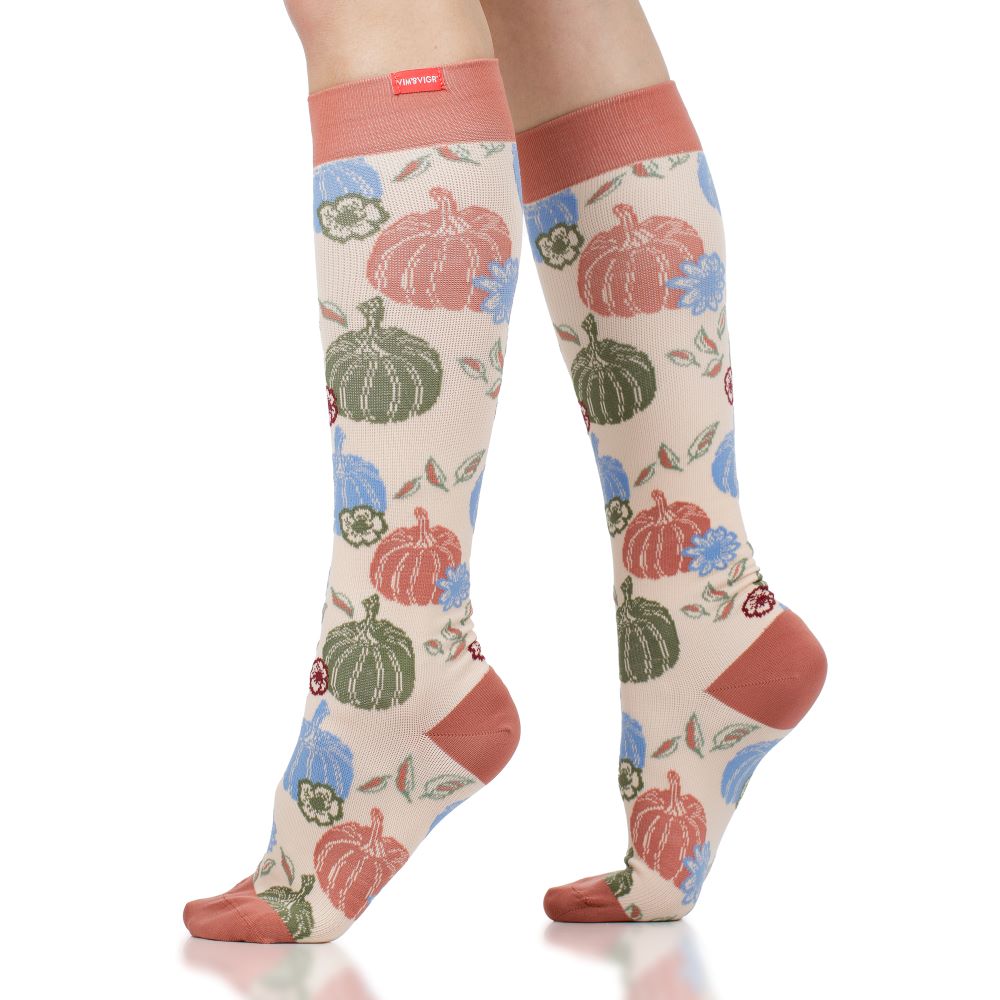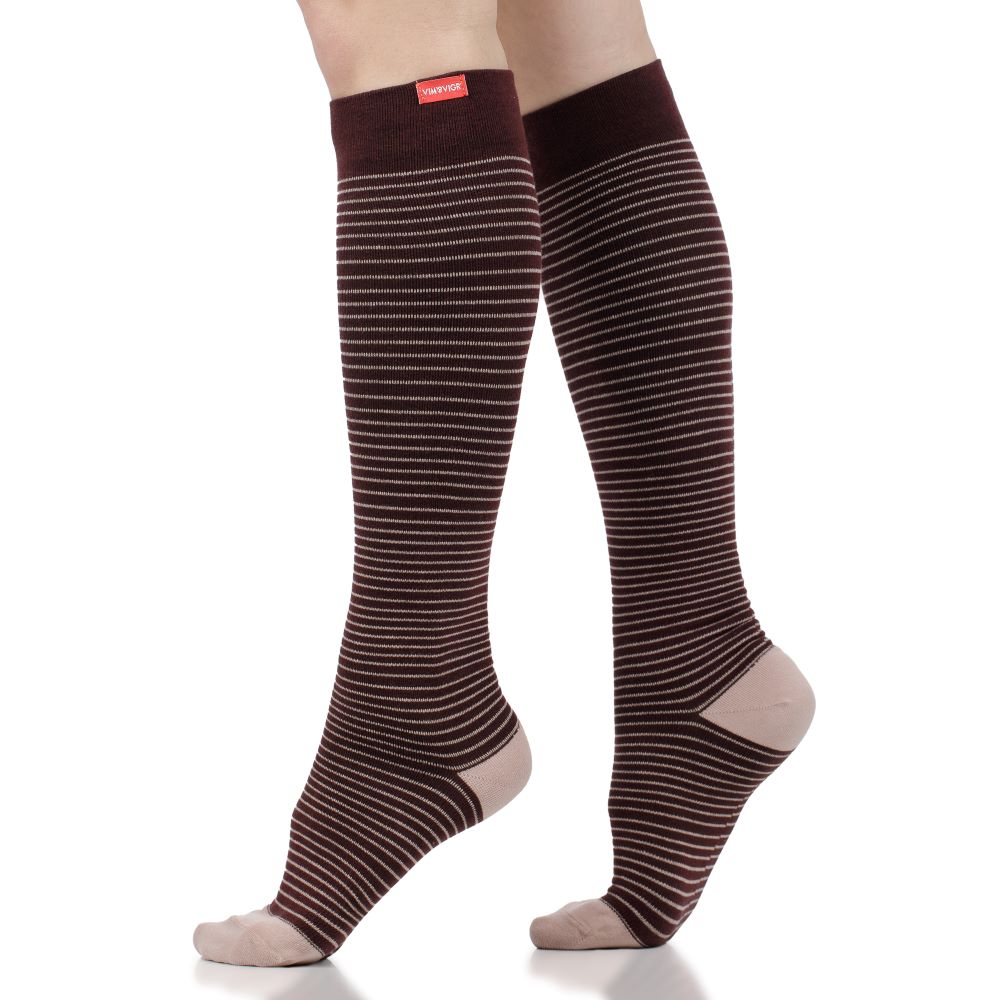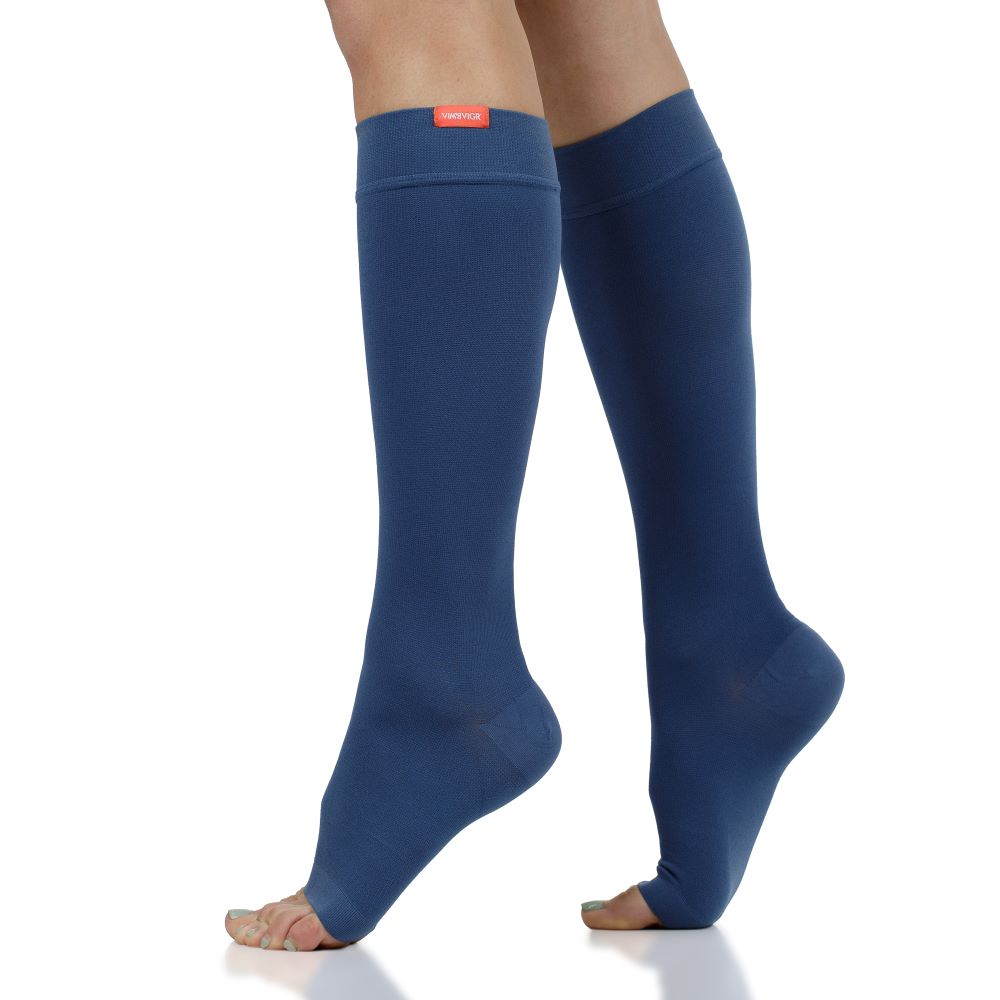10 Simple Stretches to Improve Leg Circulation
Written By Alecsa Stewart
Scientifically Reviewed by Daniel Chantigian
Do stretches improve leg circulation? Stretching is not just for athletes or for relieving sore muscles! Although stretching helps loosen muscles, particularly after strenuous physical activity, it’s also an excellent and effective way to boost blood flow, increase your flexibility, and release tension throughout the body. For many, stretching is the perfect type of activity to ease into exercising (especially after an injury).
In this article, we will introduce you to10 simple stretches that can improve the circulation in your legs, helping reduce the feeling of heavy legs.
Easy Stretches to Improve Circulation in Your Legs
Scientific research has shown that stretching can improve circulation, in particular peripheral blood flow in the legs. Moreover, a research study that found evidence that leg stretches can improve circulation throughout the body. Harvard Medical School stated that evidence from that study shows that long-term stretching can even reduce risk of health problems like heart disease, stroke, and even diabetes. Here’s where to start.
1. Ankle Circles
Simple movements like ankle circles can help limber up joints that become stiff during the day. Ankle stretches can improve blood flow into the lower legs according to one study.
Sitting in a chair, start by rotating one of your ankles clockwise. Don’t rush the movement - enjoy the release of tension. Do this 10-12 times, then switch counterclockwise. Repeat with your other leg. You can do these circles while sitting at your desk at work, too, to ward off blood pooling around your ankles.
2. Calf Stretch
Stretching your calf muscles helps release tension after running and walking, as well as loosen up the Achilles tendons. A beginner-level calf stretch involves sitting down with your feet on the floor, stretching one leg in front of you. Reach for your toes with your hand, or simply lift your toes towards you and bend the ankle. You will feel a stretch in the back of your lower leg, along the calf muscle.
Hold each stretch for about 10 seconds, then release, repeating 5 times on each side.

3. Hamstring Stretch
Sitting for long periods of time can have a negative effect on hamstring flexibility. One study on collegiate students found that hamstring tightness gets worse the longer you sit. It also changed the curvature of their lumbar spine after sitting for 12 hours.
You can release tension in the hamstrings using a foam roller, as well as by doing a simple stretch that will help improve blood flow.
Sitting down on a mat, extend one leg in front while bending the other with the foot touching the extended leg. If you can, hold the foot of the extended leg and pull it towards you, while keeping the leg straight. If that’s too tight, simply lower your torso towards the extended leg and feel the stretch on the underside of the leg.
Hold each stretch for about 5-10 seconds. Repeat 5-6 times, and then change legs doing the same for the other side.

Browse our collection of graduated compression socks here!
4. Quadriceps Stretch
Don’t let your quads suffer while you’re recovering after a workout. Releasing tension in the quadriceps also helps with hip mobility and full leg blood flow. The simplest way to do this is by standing and lifting one foot towards the back and grabbing it with your hand. Pull your foot towards you and you’ll feel a stretch down the front of the leg. The deeper the stretch, the more you will also feel it in the groin and hip area.
You can use the opposite hand to stabilize yourself against a chair or wall. Hold the stretches for 5-10 seconds and repeat 5-6 times on each side.

Browse our collection of graduated compression socks here!
5. Seated Forward Bend
A seated forward bend helps release tension in the lower back and gently stretches the glutes and hamstrings. You should bend forward on an exhale to maximize the benefit of your stretch. Be sure to stop where you feel a stretch and no pain. This stretch can progress slowly, with 2-3 repetitions of 10 seconds each time. Don’t force it and breathe in and out while you hold the stretch (don’t hold your breath).

6. Butterfly Stretch
It’s also important to stretch the inner thighs and the hip joint. To perform the butterfly stretch, begin by sitting down with your feet facing each other and your knees bent. Don’t bring the feet too close to your torso - start where you feel comfortable. You should already feel a light stretch on the inside of the legs.
Gently and carefully, move the feet closer to your core. You can do this with your hands. Hold the position that feels like a stretch, but is still manageable, for 20-30 seconds. Then release gently. Repeat 2-3 times.
7. Leg Raises
Lateral leg raises activate your glutes and boost blood flow throughout the legs. You don’t have to lift them very far to feel the burn on the gluteal muscles, either.
Start by lying on your side, supporting your head with your arm. Make sure your pelvis doesn’t swing back and forth as you bring your leg up and down. With each lift, hold the leg in place for 3-5 seconds and squeeze the glutes. Do 8 raises per side, then lower the leg in front of you, with your knee bent, and feel the stretch in your glutes as you release the tension.
8. Lunges
Lunges are excellent exercises for stability, strength, and boosting blood flow. Beginners can perform them with no added weight and feel great benefits. Forward lunges activate the glutes, quads, and hamstrings, which improves blood circulation and strengthens the muscles.
Start by standing with your feet hip-width apart, then take one step forward and lower yourself so that your knees and hips are at 90-degree angles. Don’t let the back knee touch the floor. Push off from the front foot back to the starting position. Repeat 8 times on each side.
For this exercise, only push yourself as much as you feel comfortable. It may be helpful to do this next to a wall or holding onto a chair to help you keep your balance. Start with one set, and as you build strength and balance, increase to two and then three sets.

Sleep better with soft compression socks that help you recover after long days on your feet.
9. Hip Flexor Stretch
long flight with this fantastic stretch. First, perform a lunge and bring your back knee to rest on the floor. Then, lean forwards while facing forward to feel the stretch down the front of your hip (of the back leg). You can challenge yourself by lifting your arms straight up as you move forward. Slowly come back to the starting position. Repeat a 2-3 times, as needed.

10. Standing Calf Stretch
This is a good alternative to the sitting calf stretch above. Stand facing a wall and place your hands on the wall for support. Reach one foot back so you’re in a half-walking position. Press into your back heel so you feel the calf stretching.
Hold this stretch for about 10 seconds, then release, repeating 5 times on each side.
How to Incorporate Stretches Into Your Routine
Stretching is great for improving blood circulation throughout the body and releasing tension in your muscles. It can make long flights or even pregnancy symptoms feel less daunting and can significantly improve your comfort and wellbeing. Here are a few tips for those who are still wondering where to start!
Talk to Your Doctor Before You Start
If you have any health concerns or a pre-existing condition, or simply want to make sure you’re all clear, it’s a great idea to consult with a medical professional. They will examine your personal circumstances, check blood pressure and other risk factors, and give you important advice to avoid injuring yourself. They may even suggest some additional stretches that work well for you.
Creating a Stretching Schedule
As with any new habit, it’s important to make time for your stretches and build them into your daily routine. It even helps to create some time in your diary - add 15 minutes of stretching to your phone calendar and it will be easier to stick to doing it!
Know Your Body’s Limitations
As we’ve advised above, don’t push any stretches beyond what feels challenging, but still within a reasonable level of comfort. Stretching may be low impact, but you can still hurt yourself, so be careful and listen to your body. You will be able to increase your flexibility in time.
Dealing with Post-Stretching Soreness
If your muscles start to feel sore after stretching, boost their recovery and help them relax with a pair of compression socks. They will enhance blood circulation, which will help muscles recover quicker. A warm bath is also beneficial. Finally, performing a light leg massage can also increase peripheral circulation, loosen up tight muscles, and help you recover better.
References
Hotta, K., Kamiya, K., Shimizu, R., Yokoyama, M., Nakamura-Ogura, M., Tabata, M., Kamekawa, D., Akiyama, A., Kato, M., Noda, C., Matsunaga, A., & Masuda, T. (2013). Stretching exercises enhance vascular endothelial function and improve peripheral circulation in patients with acute myocardial infarction. International heart journal, 54(2), 59–63. https://doi.org/10.1536/ihj.54.59
Bisconti, A. V., Cè, E., Longo, S., Venturelli, M., Coratella, G., Limonta, E., Doria, C., Rampichini, S., & Esposito, F. (2020). Evidence for improved systemic and local vascular function after long-term passive static stretching training of the musculoskeletal system. The Journal of physiology, 598(17), 3645–3666. https://doi.org/10.1113/JP279866
Harvard Health Publisihing. (2020) Leg stretching may improve blood flow and prevent strokes. Harvard Medical School. Read it here.
Toya, K., Sasano, K., Takasoh, T., Nishimoto, T., Fujimoto, Y., Kusumoto, Y., Yoshimatsu, T., Kusaka, S., & Takahashi, T. (2016). Ankle positions and exercise intervals effect on the blood flow velocity in the common femoral vein during ankle pumping exercises. Journal of physical therapy science, 28(2), 685–688. https://doi.org/10.1589/jpts.28.685
Yadav, R., & Basista, R. (2020). Effect of Prolonged Sitting on Hamstring Muscle Flexibility and Lumbar Lordosis in Collegiate Student. International Journal of Health Sciences and Research (Www.ijhsr.org), 10(9), 280. Read it here.


















Leave a comment